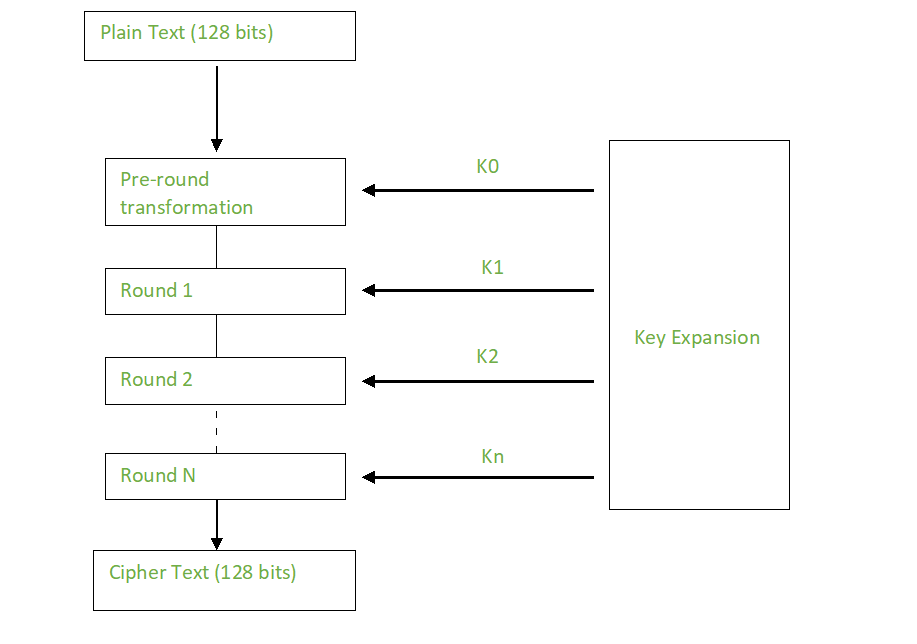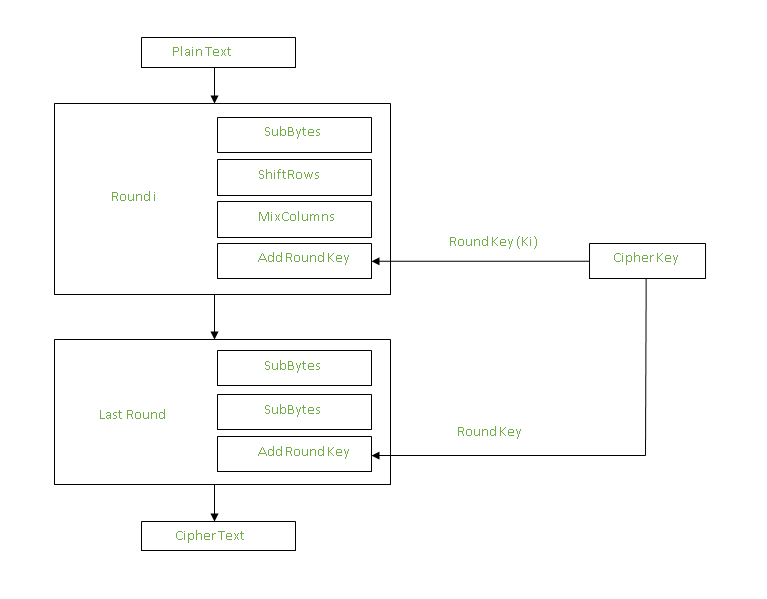AES


Introduction
Advanced Encryption Standard (AES) is a specification for the encryption of electronic data established by the U.S National Institute of Standards and Technology (NIST) in 2001. AES is widely used today as it is a much stronger than DES and triple DES despite being harder to implement.
AES is a block cipher. The key size in AES can be 128/192/256 bits. That means it takes 128 bits as input and outputs 128 bits of encrypted cipher text as output. AES relies on substitution-permutation network principle which means it is performed using a series of linked operations which involves replacing and shuffling of the input data.
Working of AES:
AES performs operations on bytes of data rather than in bits. Since the block size is 128 bits, the cipher processes 128 bits (or 16 bytes) of the input data at a time.
The number of rounds depends on the key length as follows :
Creation of Round keys:
A Key Schedule algorithm is used to calculate all the round keys from the key. So the initial key is used to create many different round keys which will be used in the corresponding round of the encryption.

Encryption
AES considers each block as a 16 byte (4 byte x 4 byte = 128 ) grid in a column major arrangement.
[ b0 | b4 | b8 | b12 |
| b1 | b5 | b9 | b13 |
| b2 | b6 | b10| b14 |
| b3 | b7 | b11| b15 ]
Each round comprises of 4 steps :
[ b0 | b1 | b2 | b3 ] [ b0 | b1 | b2 | b3 ]
| b4 | b5 | b6 | b7 | -> | b5 | b6 | b7 | b4 |
| b8 | b9 | b10 | b11 | | b10 | b11 | b8 | b9 |
[ b12 | b13 | b14 | b15 ] [ b15 | b12 | b13 | b14 ]
MixColumns :
This step is basically a matrix multiplication. Each column is multiplied with a specific matrix and
thus the position of each byte in the column is changed as a result.
This step is skipped in the last round.
[ c0 ] [ 2 3 1 1 ] [ b0 ]
| c1 | = | 1 2 3 1 | | b1 |
| c2 | | 1 1 2 3 | | b2 |
[ c3 ] [ 3 1 1 2 ] [ b3 ]
Add Round Keys :
Now the resultant output of the previous stage is XOR-ed with the corresponding round key. Here, the 16 bytes is not considered as a grid but just as 128 bits of data.

After all these rounds 128 bits of encrypted data is given back as output. This process is repeated until all the data to be encrypted undergoes this process.
Decryption
The stages in the rounds can be easily undone as these stages have an opposite to it which when performed reverts the changes. Each 128 blocks goes through the 10,12 or 14 rounds depending on the key size. The decryption process is the encryption process done in reverse.
The stages of each round in decryption is as follows :
[ b0 ] [ 14 11 13 9 ] [ c0 ]
| b1 | = | 9 14 11 13 | | c1 |
| b2 | | 13 9 14 11 | | c2 |
[ b3 ] [ 11 13 9 14 ] [ c3 ]
SubBytes:
Inverse S-box is used as a lookup table and using which the bytes are substituted during decryption.
Plaintext:
Key:
Ciphered Text:
Ciphered Text:
Key:
Plain Text: